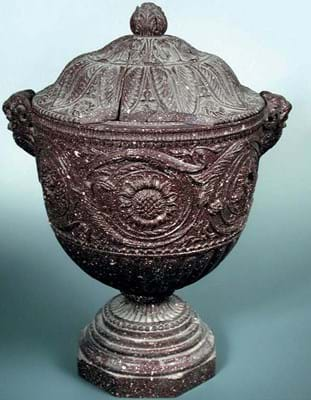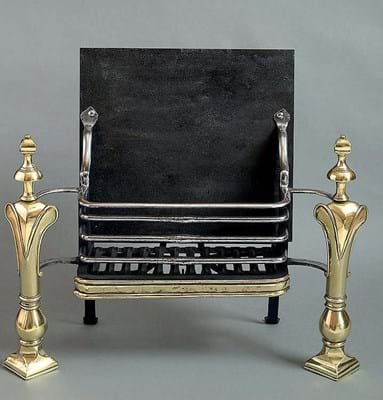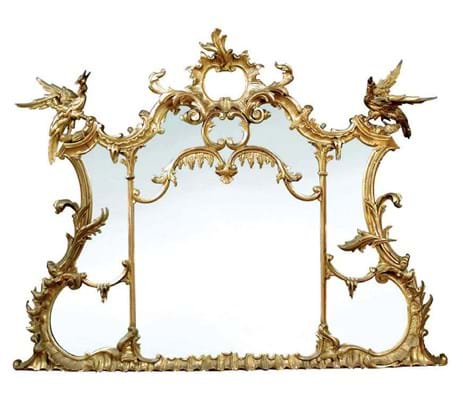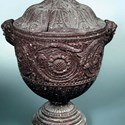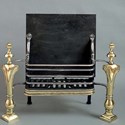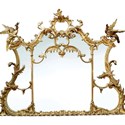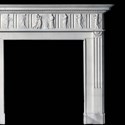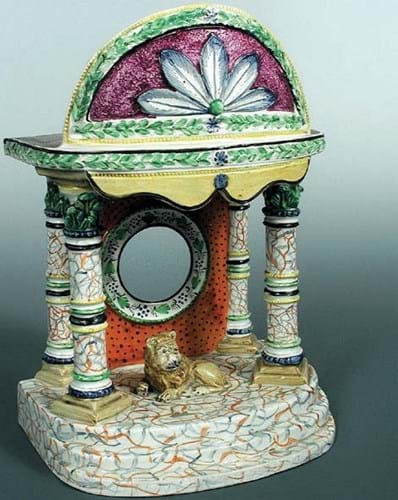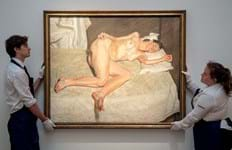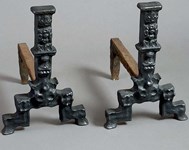Founded in 1880, the name Crowther was synonymous with salvage, and pieces from the Fulham branch of the firm have been coming back onto the market since it closed in 1992.
The final 81 items were entered into the Cheffins (22.5% buyer’s premium) June 13-14 Cambridge sale by Richard Crowther, great-grandson of the founder, from his own collection.
Most were linked to the fireside and, as expected, the top-sellers were chimney pieces which were trade purchases on a day otherwise dominated by private buying.
Highest price was paid for a 5ft 3in (1.62m) tall, 18th century marble surround carved to the frieze with vestal virgins, priests of Vesta, the Roman goddess of the hearth. Estimated at £7000-10,000, it sold at £16,000.
A mid-18th century carved gilt wood chimney piece in the manner of Matthias Locke quadrupled expectations. With statuary marble slips and plinths and standing 5ft 8in (1.75m) tall, it made £9500.
Grate expectation
While most of the fireside accoutrements could be had for under £1000 (see separate story this week), fire grates were a shade more expensive.
Best of the seven on offer was the 2ft (61cm) wide early 18th century brass and iron grate which made an above-estimate £3200.
Not everything sold – the one real disappointment was a large early 18th century English lead wine cistern decorated in bas relief with scenes from Ovid’s Metamorphosis. It was unsold at £15,000-20,000.
Overall, the Crowther lots contributed £90,000, much as expected, to the sale which – with 85% of the 840 lots getting away to a hammer total of £700,000 – had a great deal more to offer.
This included an 18th century giltwood overmantle mirror carved in the rococo style with ho-ho birds, rocaille and scrolling. The 3ft 8in x 4ft 5in (1.13 x 1.35m) ‘manner of Chippendale’ mirror went to the London trade at a six-times estimate £9000.
Pocket watch stand
Buyers were prepared to go way beyond estimate from the first lot up, a c.1810 Staffordshire pocket watch stand catalogued as ‘possibly Obadiah Sherratt’.
The 11in (28cm) high stand estimated at £300-500 was modelled as a classical portico with the ‘marbled’ stepped base mounted with a recumbent lion. A rare model, it sold to a collector at £2600.
Small decorative pieces to go similarly above estimate to collectors included an 1¼ x 2¼in (3 x 6cm) 19th century micromosaic of a spread-winged eagle within a tortoiseshell lid at £2200, and an 18th century 9½ x 11in (24 x 28cm) woolwork picture of a shepherd and shepherdess, which made £3600.
A job lot catalogued as ‘five items related to the sense of smell’ proved an attractive grouping of scent bottles and vinaigrettes and, most importantly as it turned out, an unmarked 17th century engraved silver pomander. It was this which triggered bidding on the lot well above the £200-300 estimate and went to a New York phone bidder at £4400.
The biggest surprise was provided by a porphyry urn. Standing 18½in (47cm) high on detachable socle, it was an attractive crisply carved piece but the cover, with fruiting knop above two bands of leaves and rosettes, was broken in three places.
“Porphyry is notoriously difficult to date,” pointed out auctioneer Luke Macdonald, although the £200-400 estimate was a signal this was here-to-sell. In the event the urn went to the London trade at £17,000.
Set a steady standard
Standard English furniture favourites sold steadily enough. A pair of mahogany-framed Howard armchairs illustrated the continued popularity of these fashionable late 19th-early 20th century pieces, doubling hopes at £5000, but this section was topped by a Louis XVI marquetry inlaid bonheur du jour.
The 3ft 8in (1.12m) wide writing bureau was in the manner of the ébéniste du roi JH Reisner. Targeted by the trade, it sold within estimate to a private buyer at £11,000.


